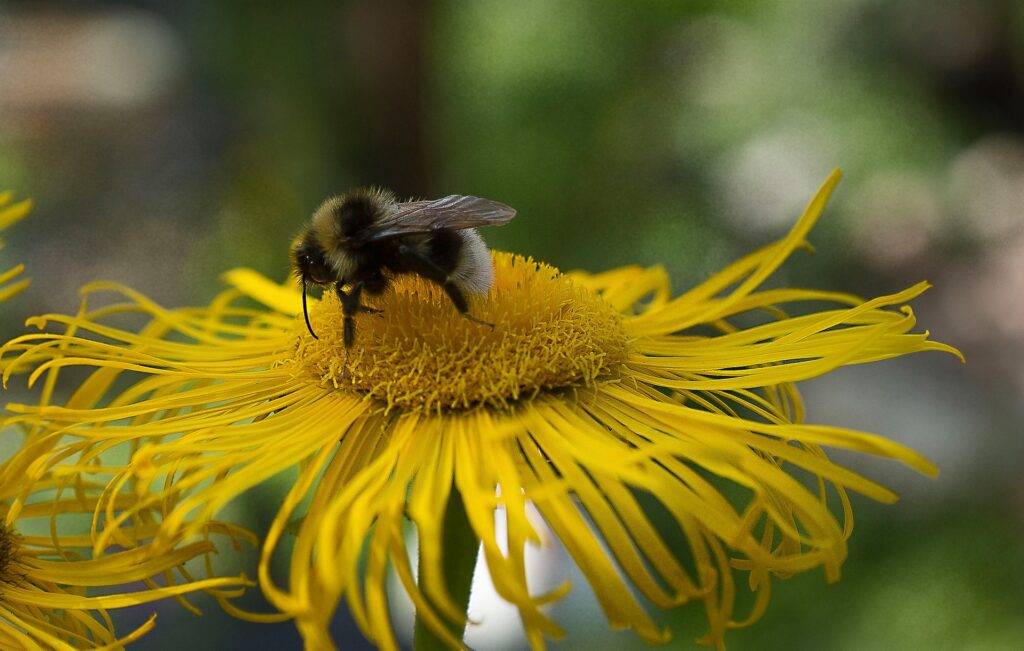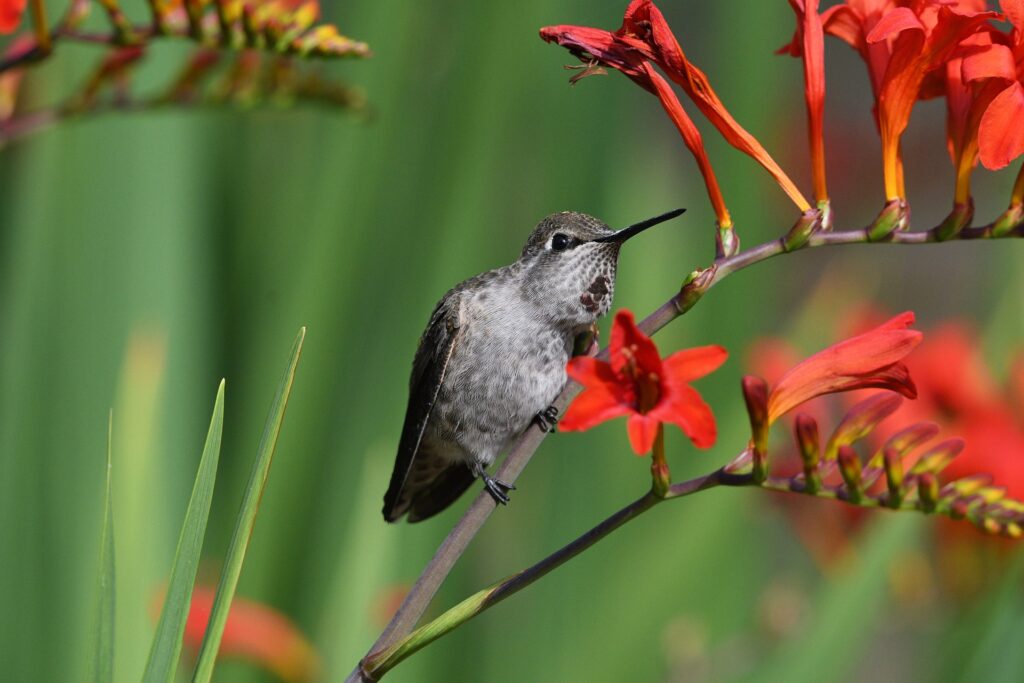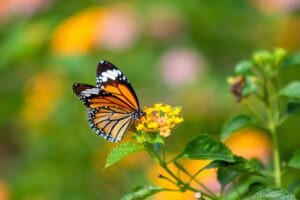
If you’ve ever taken a high school biology course, you may have learned that pollinators such as butterflies and bees evolved alongside flowers for their mutual benefit. The result of generations upon generations of plants and pollinators evolving side by side are what botanists have called “pollination syndromes.” These are fascinating systems that have much to teach us about the natural world—but recent research reveals they may not be as simple as botanists once thought.
This term “pollination syndromes” was coined when botanists in the 19th century noticed that flowers shaped like long tubes (like honeysuckles) are often pollinated by animals with long tongues or beaks. Relatively flat, bowl-shaped flowers (like daisies or sunflowers) tend to attract bees and butterflies with their less-than-streamlined bodies.
Meanwhile, some flowers produce foul odors that attract flies and carrion beetles, who are drawn by the scent. Other plants sport brilliant red flowers, and it’s no coincidence that they are pollinated by birds; the eyesight of birds allows them to see the color red particularly well.
It’s important to realize that the plants and their pollinators evolved together and shaped one another. Did coral honeysuckle evolve long tubular flowers to attract hummingbirds with long beaks, or did hummingbirds evolve long beaks to feed from coral honeysuckle? The answer is: both, at the same time. Changes in plants can influence changes in insects and animals, and vice versa.
Pollination syndromes are fun to study and to teach. For decades, teachers have presented students with the blooming patterns of plants and asked them to deduce how they are pollinated. For example, take a cactus with white flowers that only open at night. It doesn’t take Sherlock Holmes to reason that it must be pollinated at night by a nocturnal creature drawn to the light color of the flower. (Charles Darwin famously made a prediction that a particular orchid had to be pollinated by a never-before-seen moth, because of the shape of the flower. His prediction wasn’t confirmed until 21 years after his death.)
As botanists studied this phenomenon, they developed wonderful names for different types of pollination syndromes—jot these down for your next game of Scrabble. “Zoophily” is the general term for pollination by animals including insects, birds and bats. That suffix, “phily,” is from the Greek “phile,” and means “love;” “zoophily” means something like “animal love,” because these are plants that animals love. This is only the start. “Melittophily” is bee pollination, “phalaenophily” is moth pollination, and “psychophily” is butterfly pollination. Pollination by wind is the lyrical-sounding “anemophily.”

Pollination syndromes are fun and fascinating—but, like so much in science, the best explanations are often oversimplifications.
A 2009 study found that maybe only one-third of flowering plants are pollinated by vectors accurately predicted based on the plant’s floral traits.*
That is, two-thirds of flowering plants are not as choosey as we expect them to be based on their looks. Many flowering plants are pollinated by a variety of different types of pollinators. A long-tubed flower might attract birds with long beaks, but it is often pollinated by a wide variety of creatures.
This doesn’t mean pollination syndromes aren’t useful. They provide context to talk about the ways in which species evolve, not in a vacuum but rather together, as a system that exerts pressure on its components in tandem. This process of tandem, related, interconnected change over time is called co-evolution.
Pollination syndromes may not be the universal truisms that botanists once believed, but they are still great examples of how the living world operates as an interconnected whole.
* Ollerton J.; Alarcón R.; Waser N.M.; Price M.V.; Watts S.; Cranmer L.; Hingston A. Peter; Rotenberry J. (2009). “A global test of the pollination syndrome hypothesis”. Annals of Botany. 103 (9): 1471–1480. doi:10.1093/aob/mcp031.







